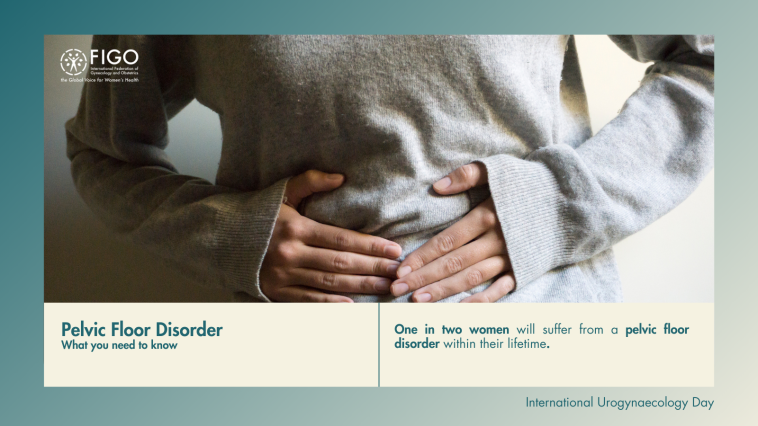International Urogynaecology Day: raising awareness of pelvic floor disorders to the global community

This International Urogynaecology Day, Prof Magali Robert, Chair of the FIGO Committee on Urogynaecology and Pelvic Floor Disorders, raises awareness of incontinence, prolapse and pelvic pain.
One in two women will suffer from a pelvic floor disorder within her lifetime. How can we be silent when reported rates are as high as 50%?1 Yet, women and health care providers remain voiceless in the global arena. More troubling is that there are preventable and manageable solutions to this problem so there is no reason for women to carry this burden alone.2,3
The global health and economic burden for pelvic floor disorders are unknown yet they stretch beyond the individual woman to include her family and community. Shame, isolation, marginalisation, and lack of access to health care interplay to perpetuate the silence.4 This impact is a societal responsibility as the resultant disorders are evidence of gender inequity, fragmented and/or absent care. Prevention and management initiatives are a reflection societies’ wellbeing.
The failure to address incontinence, prolapse and pelvic pain may reflect the tendency to silo women’s care into focused areas while failing to appreciate that pelvic floor disorders intersect with all aspects of health care. Pelvic floor health includes reproductive and sexual rights, childbirth, well women care and spanning into healthy ageing. The disparity is more evident in low- and middle-income countries.5 However, pelvic floor disorders are issues important to every woman and every health care provider. We can begin these conversations by simply asking women:

We must then continue the conversation through advocacy and dignified care. The silence needs to be broken. It is time to bring awareness of pelvic floor disorders to the global community.
The FIGO Urogynaecology and Pelvic Disorders Committee commits to:
- Advocacy to demand that the voices of women be heard.
- Advocacy to demand that access to care be available to all women.
- Support the development of curriculum to inform health care providers on prevention and management of pelvic floor disorders.
- Education to manage incontinence, prolapse and pelvic pain.
- Education to implement preventive strategies.
- Collaboration with women, organizations, and policy makers to strengthen these commitments.
References:
- Barber MD, Maher C. Epidemiology and outcome assessment of pelvic organ prolapse. International urogynecology journal. 2013 Nov 1; 24(11):1783-90.
- Okeahialam NA, Dworzynski K, Jacklin P, McClurg D. Prevention and non-surgical management of pelvic floor dysfunction: summary of NICE guidance. bmj. 2022 Jan 6;376.
- Maher CF, Baessler KK, Barber MD, Cheon C, Consten EC, Cooper KG, Deffieux X, Dietz V, Gutman RE, Van Iersel JJ, Nager CW. Summary: 2017 international consultation on incontinence evidence-based surgical pathway for pelvic organ prolapse. Urogynecology. 2020 Jan 1;26(1):30-6. 4. Neglect of pelvic organ prolapse and urinary incontinence are exemplary of human rights violations towards women: moving towards a resolution | Figo
- Ongenda IO, Mengistu Z, Tincello D, Williams C, Pitchforth E. Opinion: pelvic floor disorders: learning from chronicity & chronic care models. Frontiers in Global Women's Health. 2023 Jun 19;4:1006693.